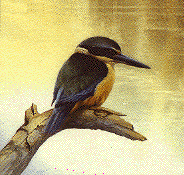
Zoology 357: Evolutionary Ecology -- Spring 1998

Tuesday-Thursday 12:30-2PM, Welch 2.304.
Instructors: Eric R. Pianka (Prof.)
and W. Bryan Jennings (T. A.)
Office Hours: ERP (TuTh2-3) or by prior arrangement (471-7472)
Text: Pianka, Evolutionary Ecology, Fifth ed. (read pp. 1-13, 121-180)
Student Evaluations
![]()
Suggested Additional Reading:
Ginzburg and Golenberg, Lectures in Theoretical Population Biology
(read pp. 1-5 and 193-219)
Gotelli, A Primer of Ecology (read pp. 2-85)
Exams: Two in-class exams during the semester and one comprehensive final, scheduled as follows:
First Exam: Tuesday, 15 October
Second Exam: Thursday, 5 December
Final Exam: Monday, 16 December, 2-5 PM
Grade:
First Exam: 25%
Second Exam: 25%
Final Exam: 50%
![]()
Course Outline, Zoology 357: Evolutionary Ecology
Background
Domain of ecology, definitions and ground work; the importance of wild organisms in pristine natural environments and the urgency of basic ecological research; scientific methodology; models; multiple causality; limiting factors, tolerance limits, the principle of allocation; natural selection, self-replicating molecular assemblages; units of selection, levels of approach in biology.
![]()
Principles of Population Ecology
Life tables and schedules of reproduction; net reproductive rate and reproductive value; stable age distribution; intrinsic rate of increase; evolution of reproductive tactics; avian clutch size; evolution of old age and death rates; population growth and regulation -- Pearl-Verhulst logistic equation; density dependence and independence; r and K selection; population "cycles," cause and effect; use of space (vagility, home range, territoriality, foraging tactics); evolution of sex; sex ratio; mating systems; sexual selection; fitness and the individual's status in the population; kin selection, reciprocal altruism, parent-offspring conflict, group selection, metapopulations.
Interactions Between Populations
Parasitism, Commensalism, Mutualisms, etc.; Direct versus indirect and complex population interactions. Competition and Niche Theory: Lotka-Volterra equations and competition theory; diffuse competition; niche overlap and competition; niche dimensionality; niche breadth (specialization versus generalization); evolutionary consequences; laboratory and field experiments; other evidence from nature; future prospects. Predation: Theory; predator-prey oscillations; aspect diversity; "prudent" predation and optimal yield; evolutionary consequences; predator escape tactics; adaptive coloration; mimicry; warning calls; coevolution; plant-herbivore interactions and plant-apparency theory; selected other observations and experiments.
Community Ecology
Macrodescriptors; compartmentation in communities (trophic levels, guild structure, and food webs); connectance; pyramids of numbers, biomass, and energy; energy flow and ecological energetics; secondary succession and transition matrices; community matrix; saturation with individuals and with species; species diversity; diversity of lowland rainforest trees; community stability; chaotic attractors; evolutionary convergence and ecological equivalents; evolution of communities; pseudo-communities.
Biogeography
Classical biogeography; biogeographic "rules;" continental drift; vicariance biogeography and phylogenetic systematics; island biogeography; species-area relationships; equilibrium theory; compression hypothesis; islands as ecological experiments: Krakatau, Darwin's finches, Hawaiian Drosophilidae, and other examples; applied biogeography and the design of nature preserves.
